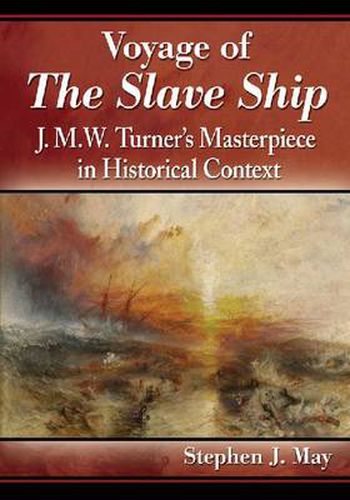Readings Newsletter
Become a Readings Member to make your shopping experience even easier.
Sign in or sign up for free!
You’re not far away from qualifying for FREE standard shipping within Australia
You’ve qualified for FREE standard shipping within Australia
The cart is loading…






This title is printed to order. This book may have been self-published. If so, we cannot guarantee the quality of the content. In the main most books will have gone through the editing process however some may not. We therefore suggest that you be aware of this before ordering this book. If in doubt check either the author or publisher’s details as we are unable to accept any returns unless they are faulty. Please contact us if you have any questions.
Set against the backdrop of the Atlantic slave trade, this book traces the development, exhibition, and final disposition of one of J. M. W. Turner’s greatest and most memorable paintings. Queen Victoria’s reign (1837-1901) in Great Britain produced unprecedented wealth and luxury. For artists and writers this period was particularly noteworthy in that it gave them the opportunity to both praise their country and criticise its overreaching ambition. At the forefront of these artists and writers were men like J. M. W. Turner, Charles Dickens, William Makepeace Thackeray, Alfred Lord Tennyson, and John Ruskin, who created some of the most enduring works of art while exposing many of the social evils of their native land.
The book also analyses the man behind the painting. Aloof, gruff and mysterious, Turner resisted success. He worked as a solitary artist, travelling to Europe, sketching towns along the way, studying nature, and transferring his experiences to finished paintings upon his return to London. The son of a barber, he grew up in London and experienced many of the social issues of the age: slavery and freedom, poverty in the slums, monarchy and democracy, stability and anarchy. Turner was truly the poet of nature and its innumerable mysteries.
$9.00 standard shipping within Australia
FREE standard shipping within Australia for orders over $100.00
Express & International shipping calculated at checkout
This title is printed to order. This book may have been self-published. If so, we cannot guarantee the quality of the content. In the main most books will have gone through the editing process however some may not. We therefore suggest that you be aware of this before ordering this book. If in doubt check either the author or publisher’s details as we are unable to accept any returns unless they are faulty. Please contact us if you have any questions.
Set against the backdrop of the Atlantic slave trade, this book traces the development, exhibition, and final disposition of one of J. M. W. Turner’s greatest and most memorable paintings. Queen Victoria’s reign (1837-1901) in Great Britain produced unprecedented wealth and luxury. For artists and writers this period was particularly noteworthy in that it gave them the opportunity to both praise their country and criticise its overreaching ambition. At the forefront of these artists and writers were men like J. M. W. Turner, Charles Dickens, William Makepeace Thackeray, Alfred Lord Tennyson, and John Ruskin, who created some of the most enduring works of art while exposing many of the social evils of their native land.
The book also analyses the man behind the painting. Aloof, gruff and mysterious, Turner resisted success. He worked as a solitary artist, travelling to Europe, sketching towns along the way, studying nature, and transferring his experiences to finished paintings upon his return to London. The son of a barber, he grew up in London and experienced many of the social issues of the age: slavery and freedom, poverty in the slums, monarchy and democracy, stability and anarchy. Turner was truly the poet of nature and its innumerable mysteries.